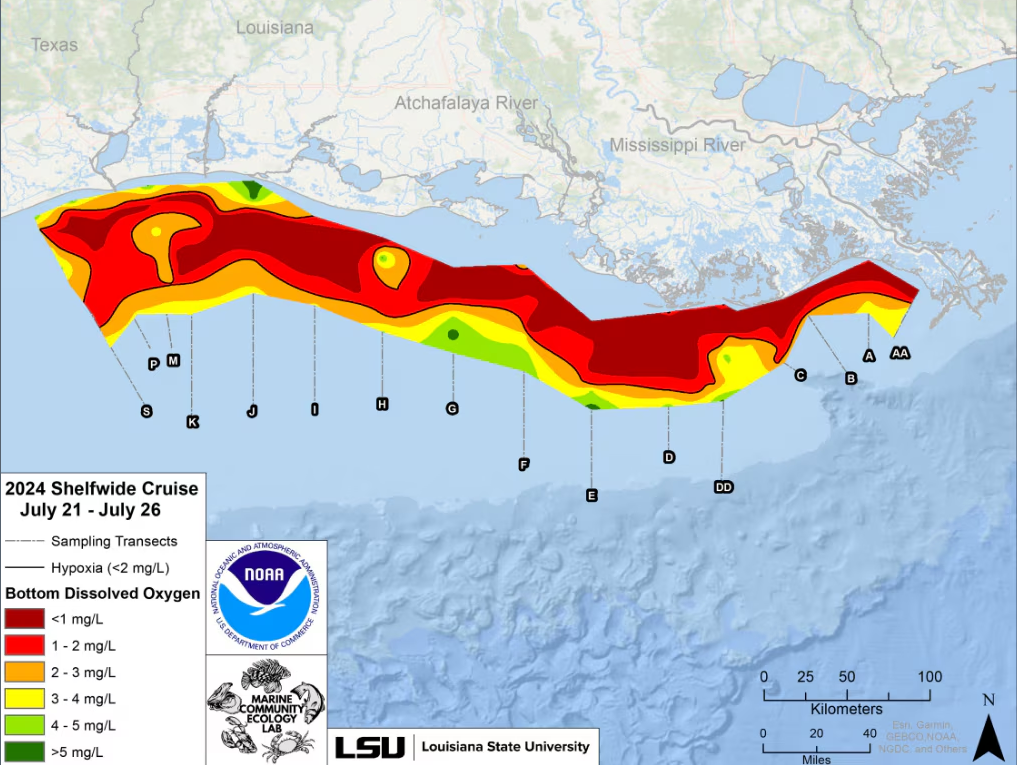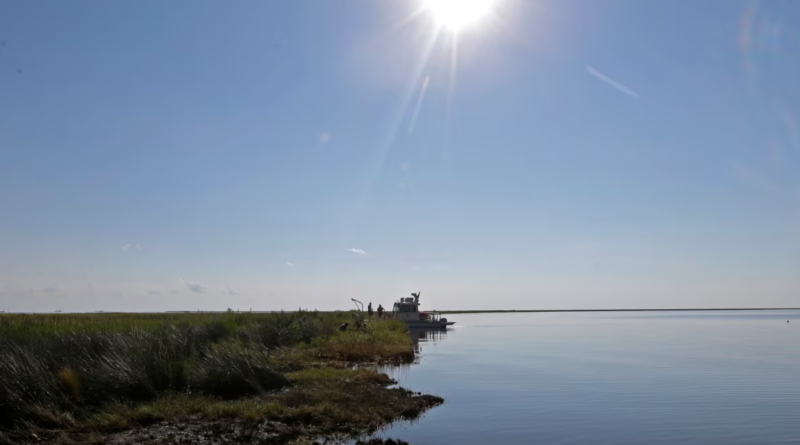The “dead zone” off the southern coast of the United States has reached the size of the state of Connecticut
Scientists said that the “dead zone” in the Gulf of Mexico – an area with low or zero oxygen content, in which marine animals can not live – has now reached an area of 6705 square miles (17.3 thousand square kilometers). This is reported on the website of the National Oceanic and Atmospheric Administration of the United States (NOAA), with the support of which the study was conducted.
The size of the “dead zone”, this year exceeded the area of the state of Connecticut, were determined during a scientific mission of scientists from the University of Louisiana and the Marine Consortium of Louisiana universities on board the research vessel LUMCON Pelican.
The figure obtained was higher than June forecasts: NOAA expected that the area of the problematic water area will be about 15 thousand square kilometers.
“Dead zone”, aka hypoxia zone, in the Gulf of Mexico is formed when excess nutrients are released from the Mississippi River basin. This provokes excessive growth of algae, which depletes oxygen in the water, forcing fish and bottom-dwelling animals to leave the area.

The NOAA study is conducted annually as part of a state project that aims to reduce the average (five-year) extent of the “dead zone” to less than 5 thousand square kilometers by 2035. Currently, that five-year figure exceeds 11 thousand square kilometers.
While the size of this year’s dead zone is more than three times the target, its extent is not a record. In 38 years of such measurements, it is the 12th largest scale of the hypoxia zone.
“It’s critical that we measure the hypoxia of this region as an indicator of ocean health, especially in the face of a changing climate and potential storm intensification and increased precipitation and runoff,” said Nicole Leboeuf, associate administrator of NOAA’s National Ocean Service. Such data collection helps authorities adjust strategies to reduce the dead zone and monitor its impact on coastal regions, she said.
